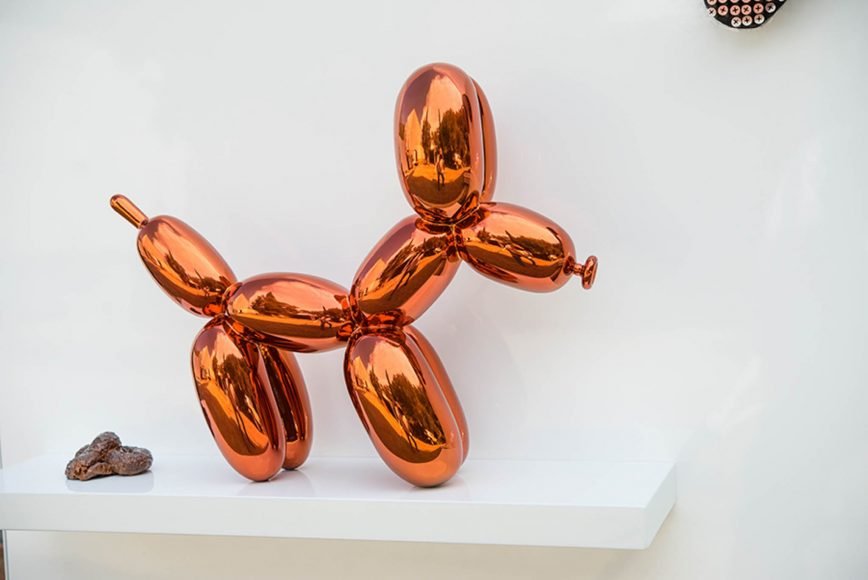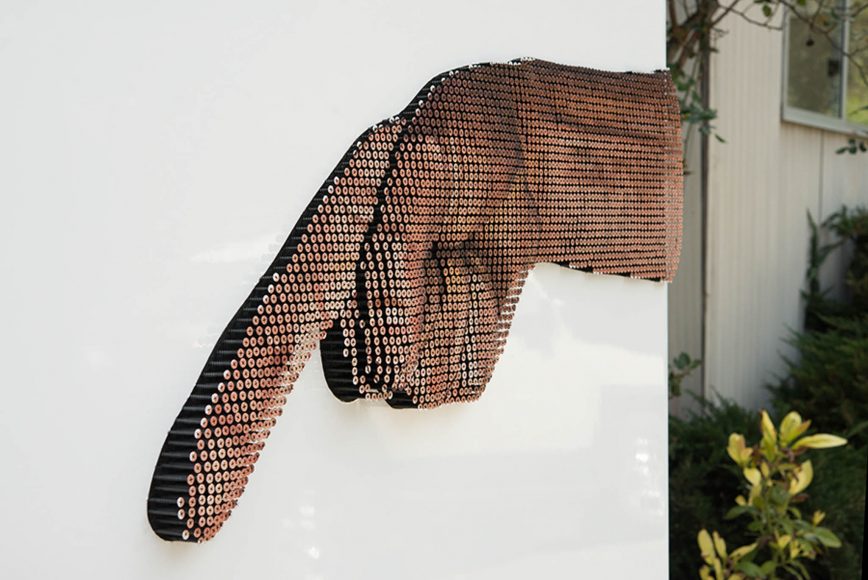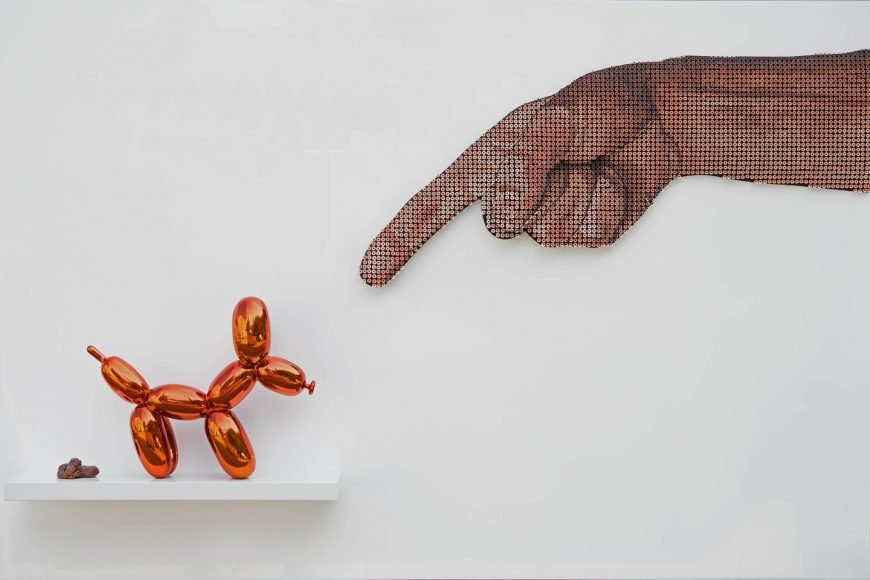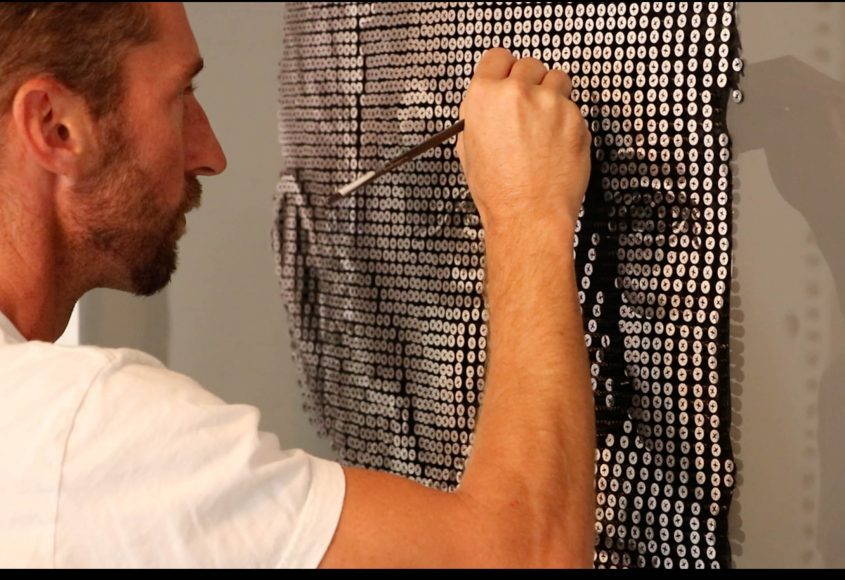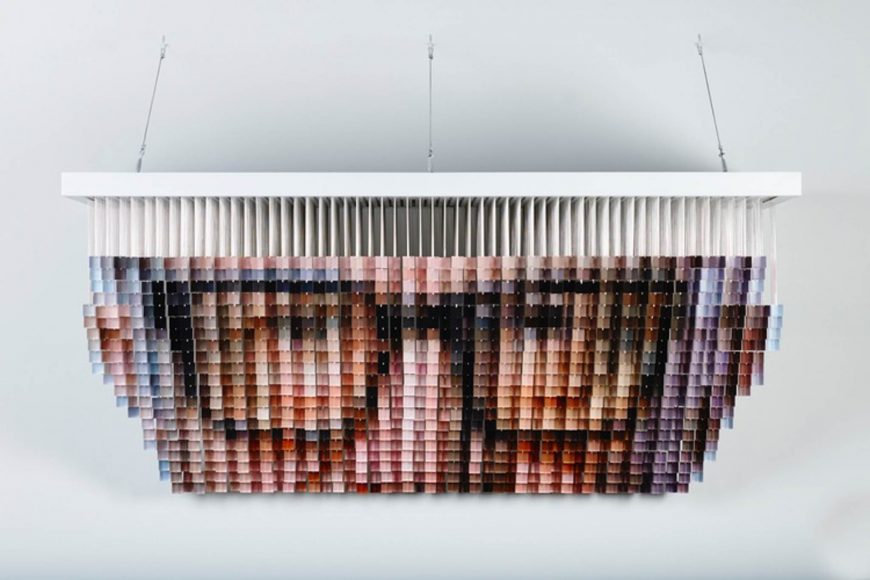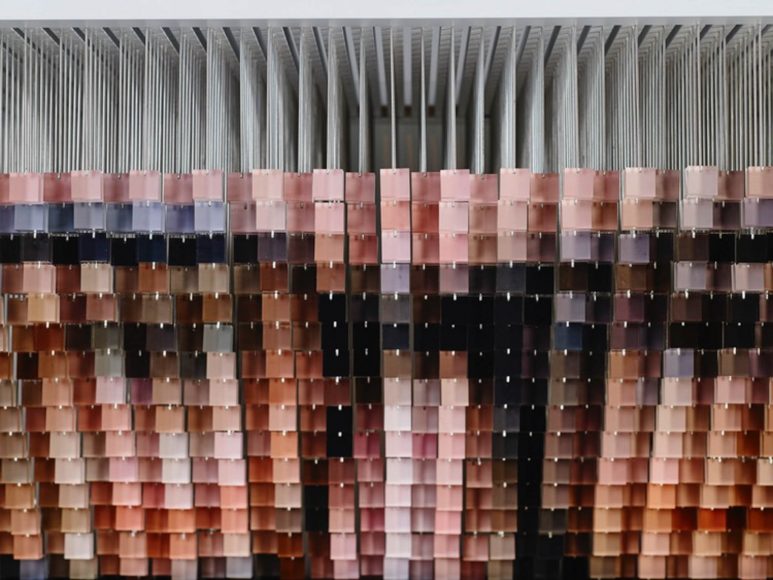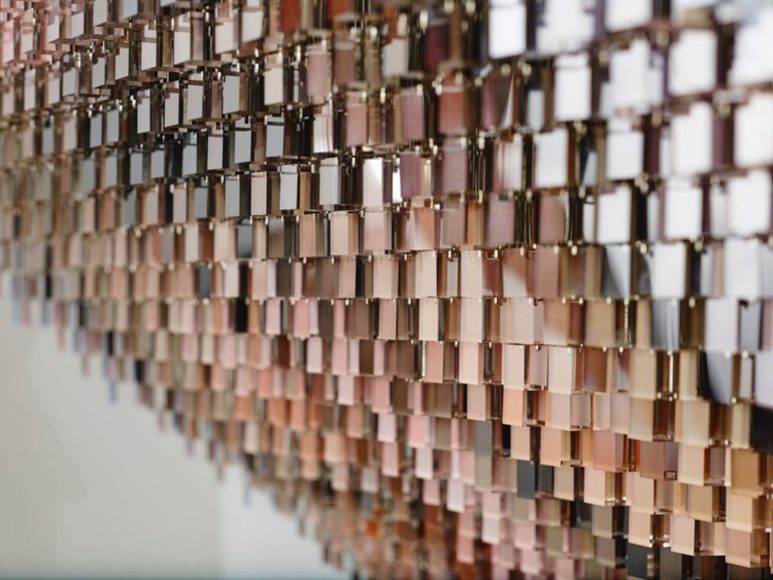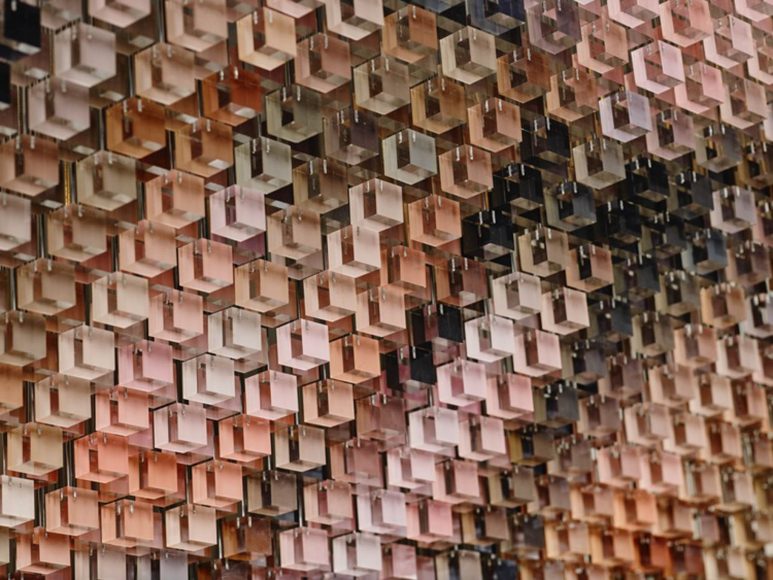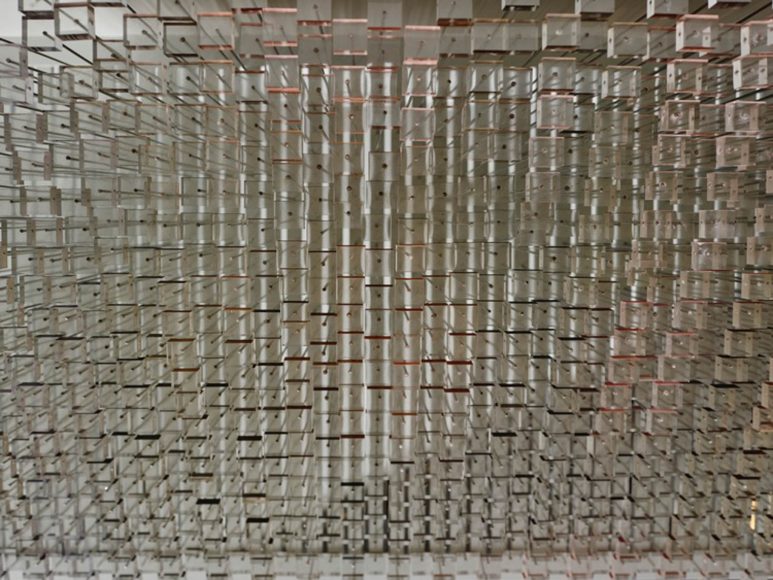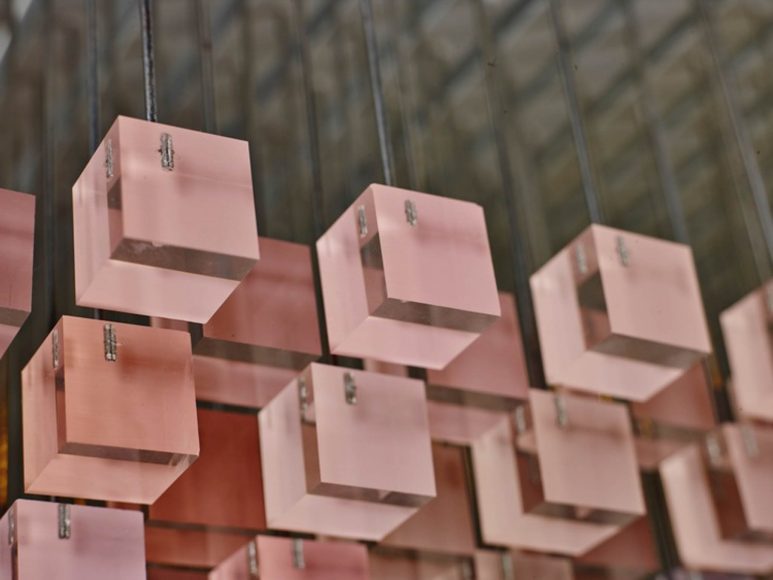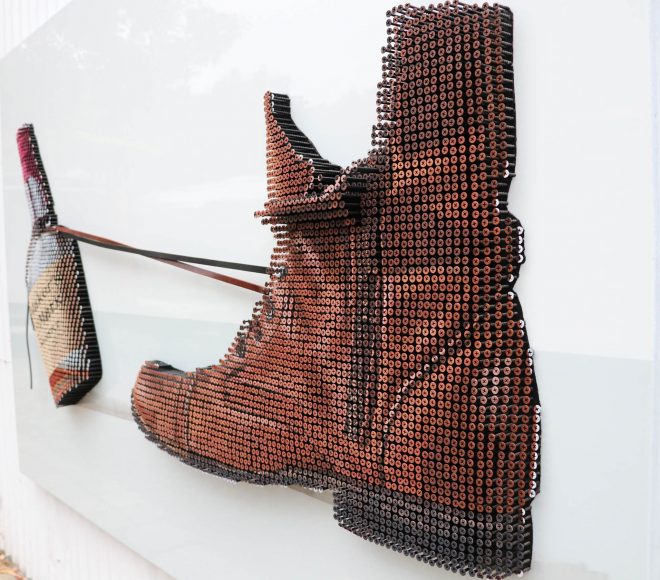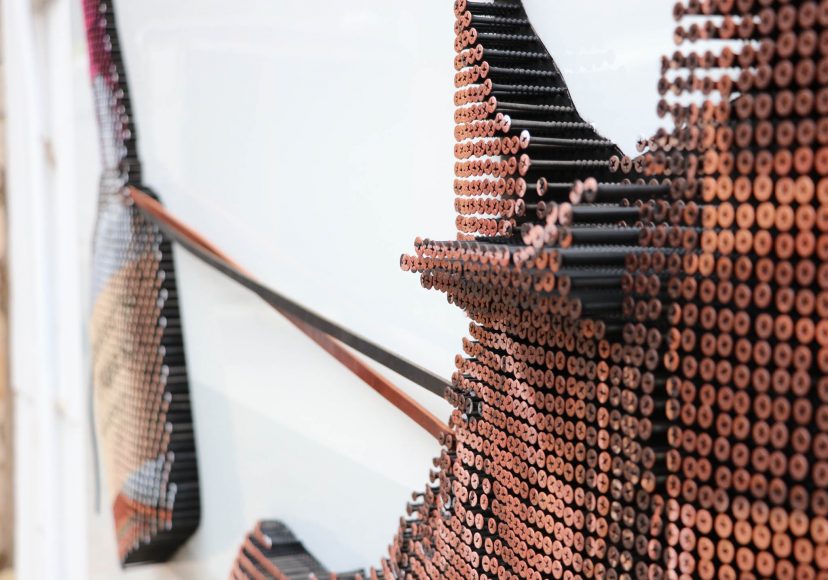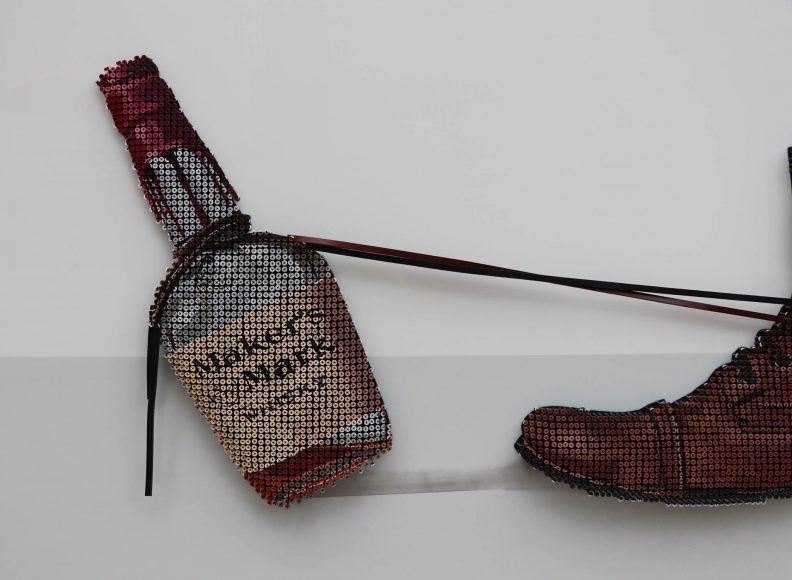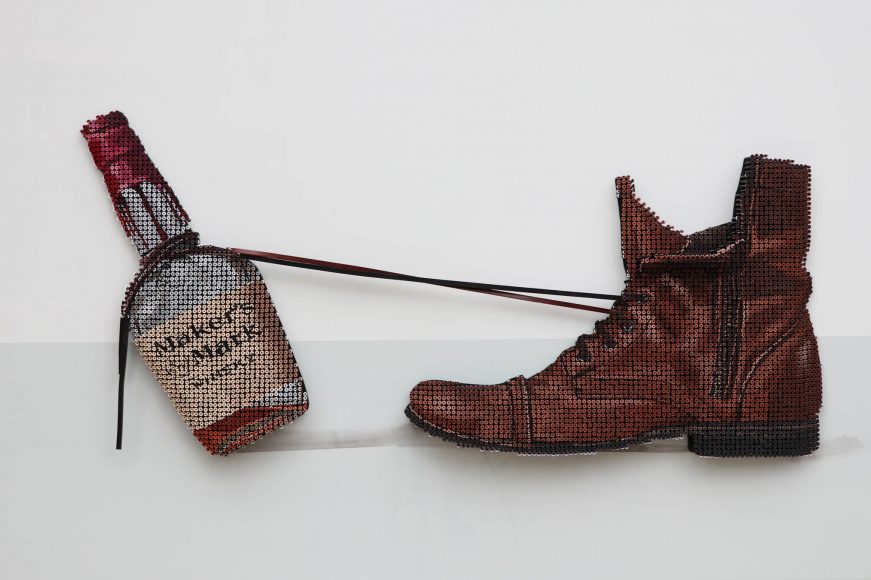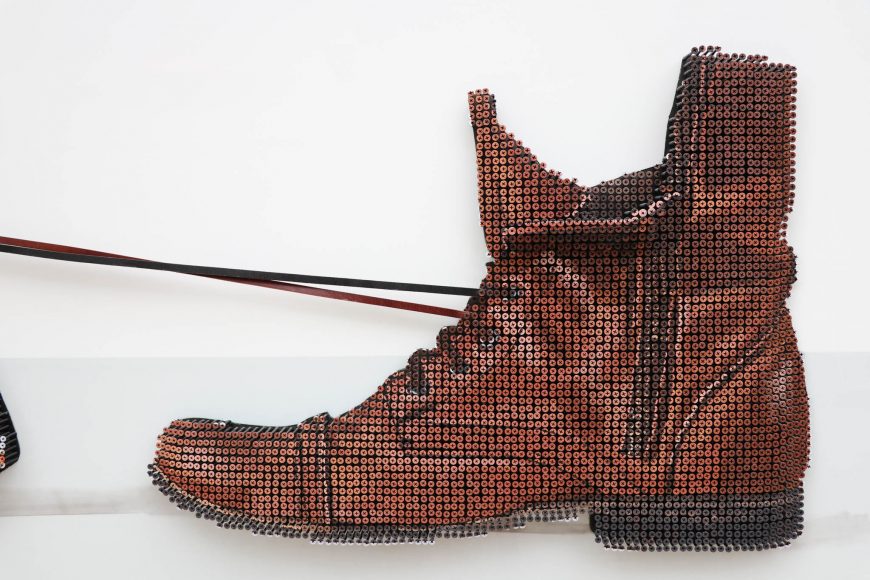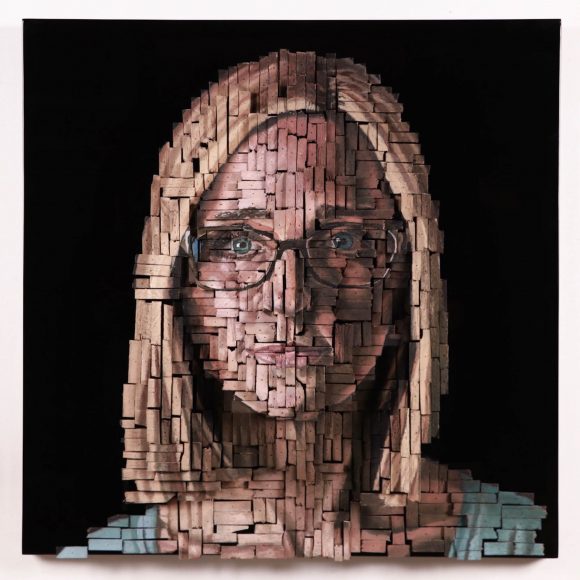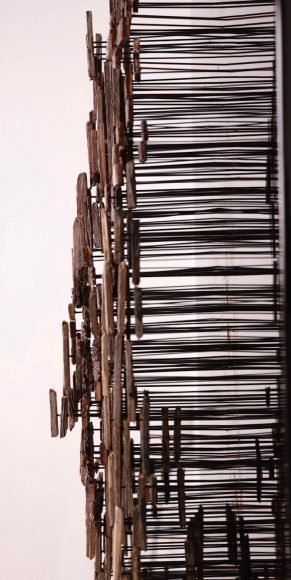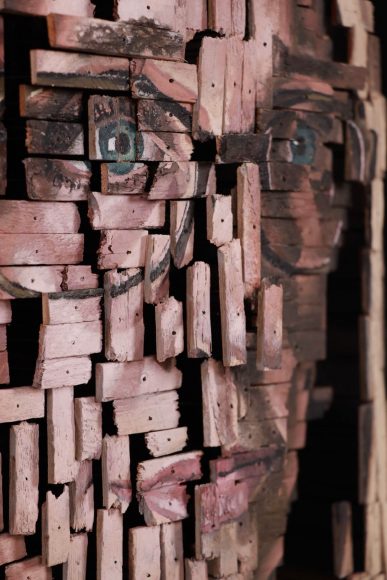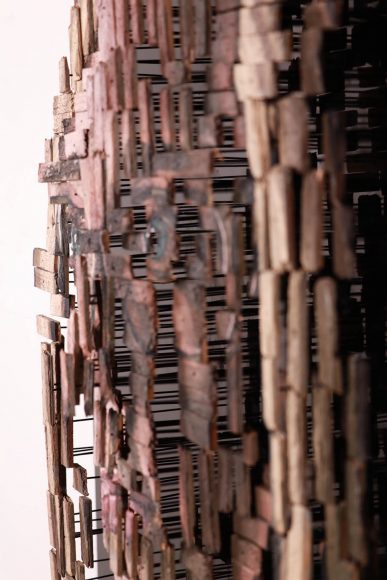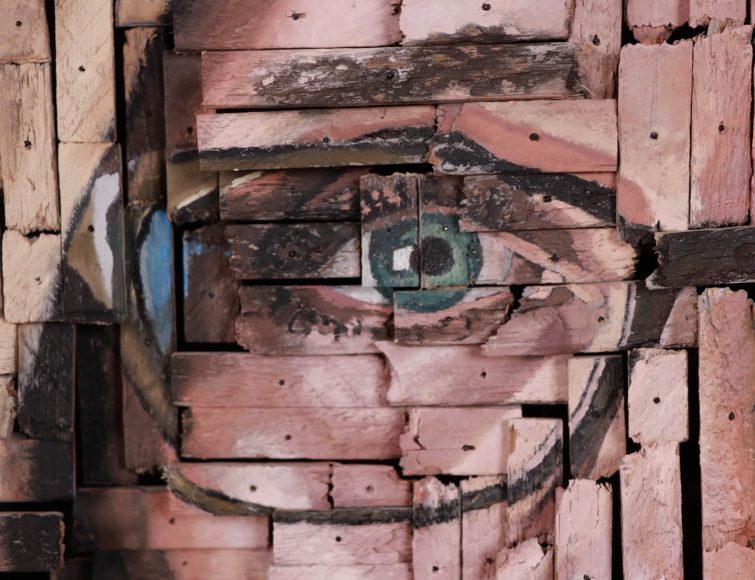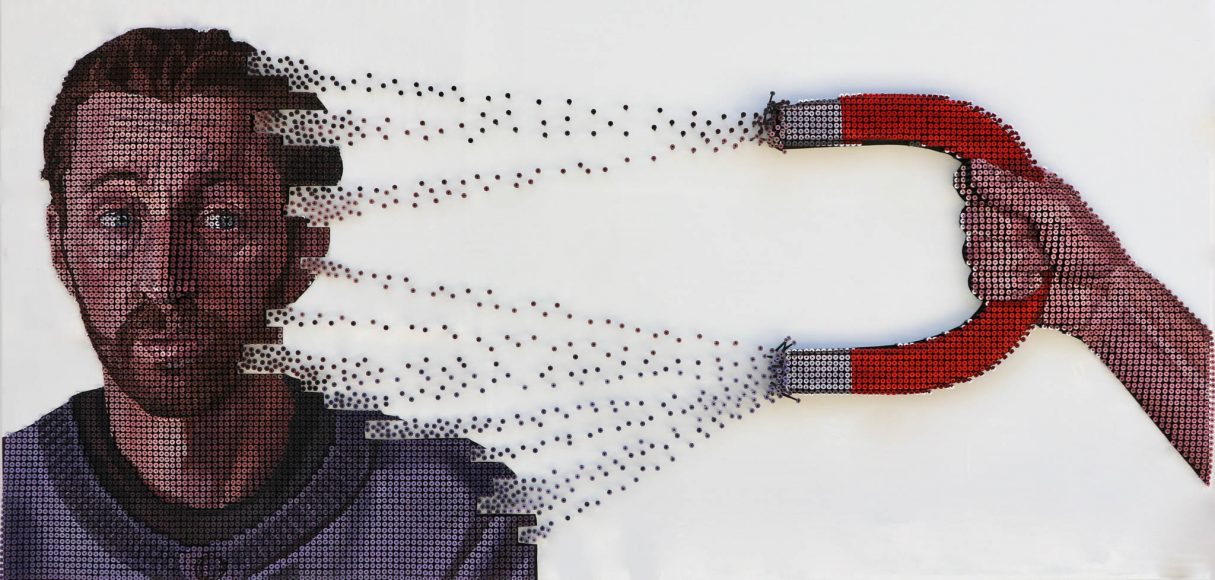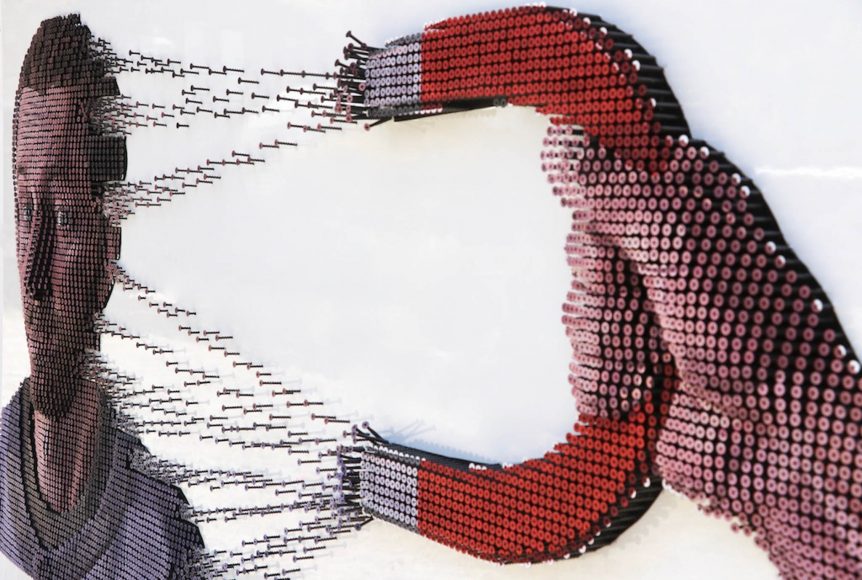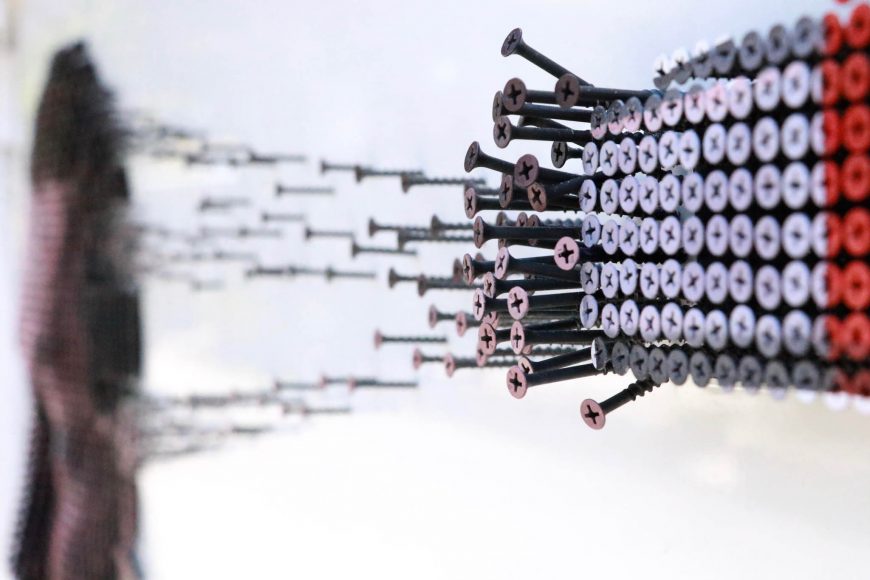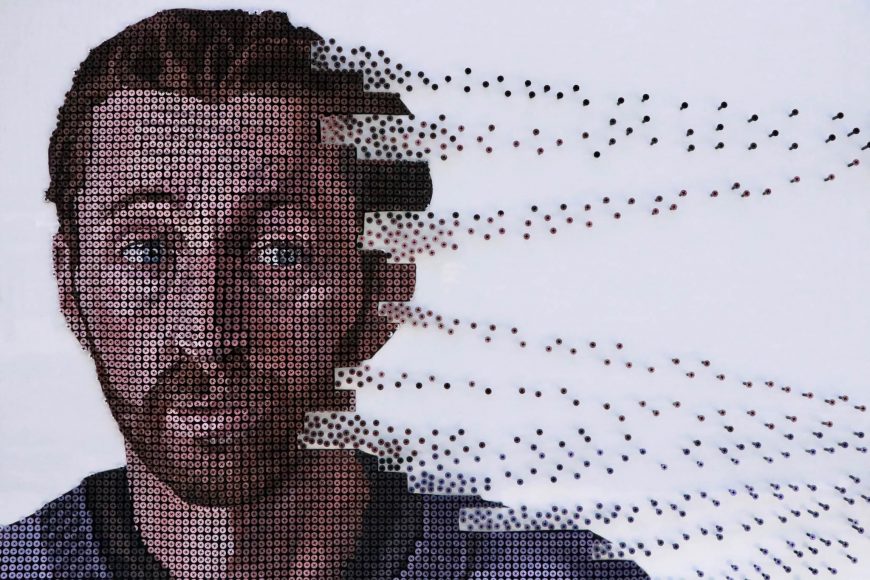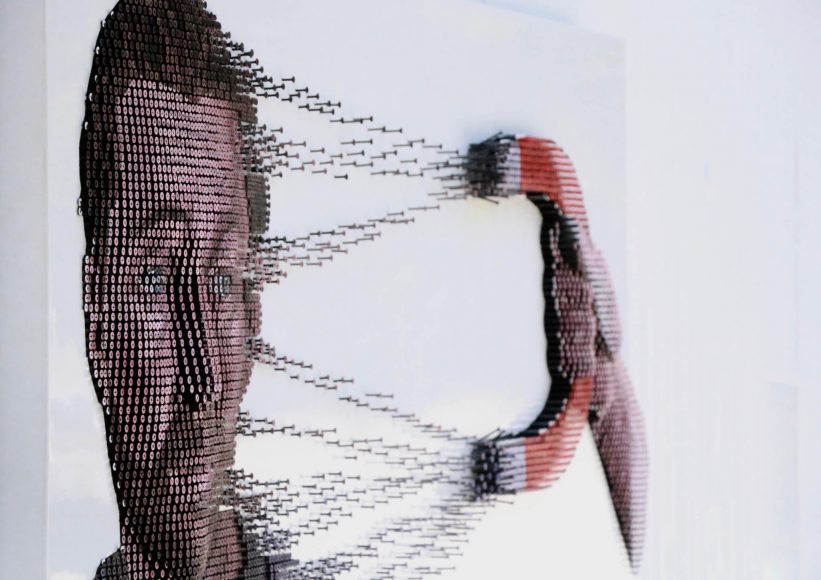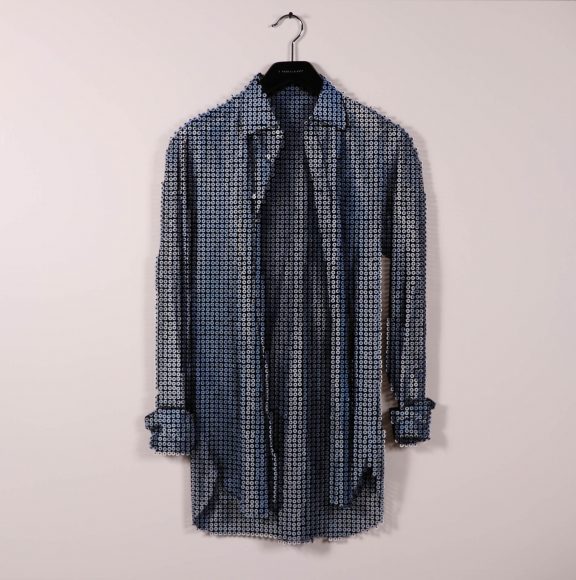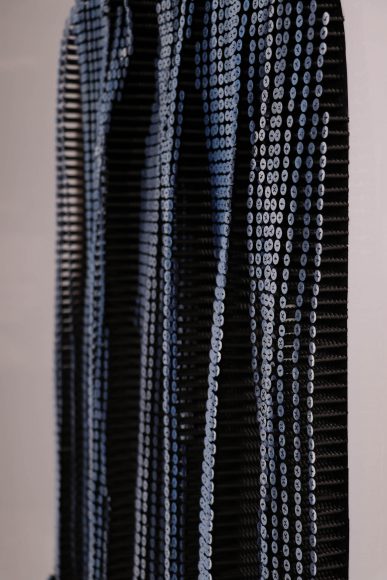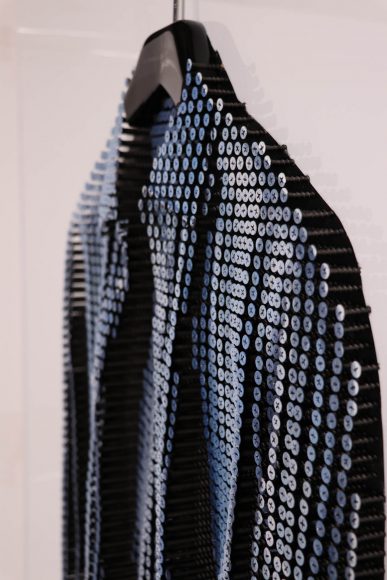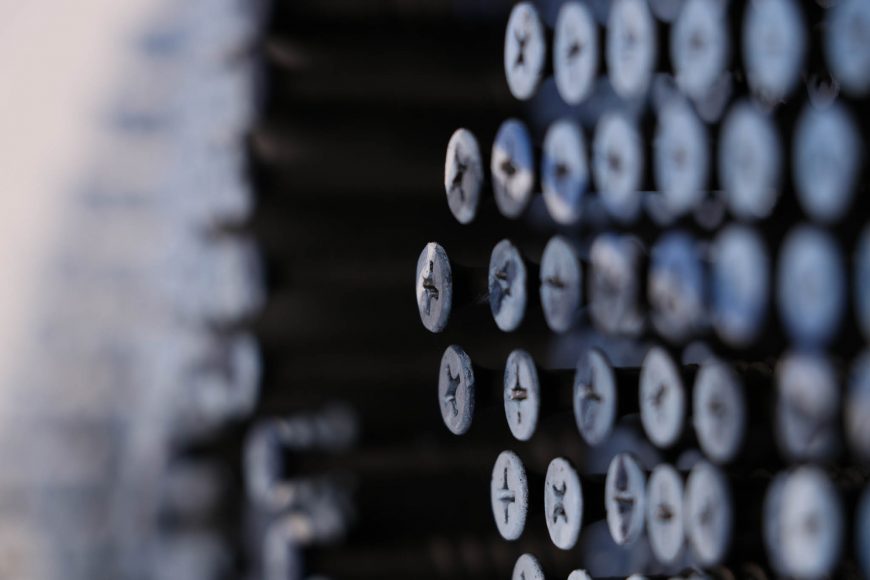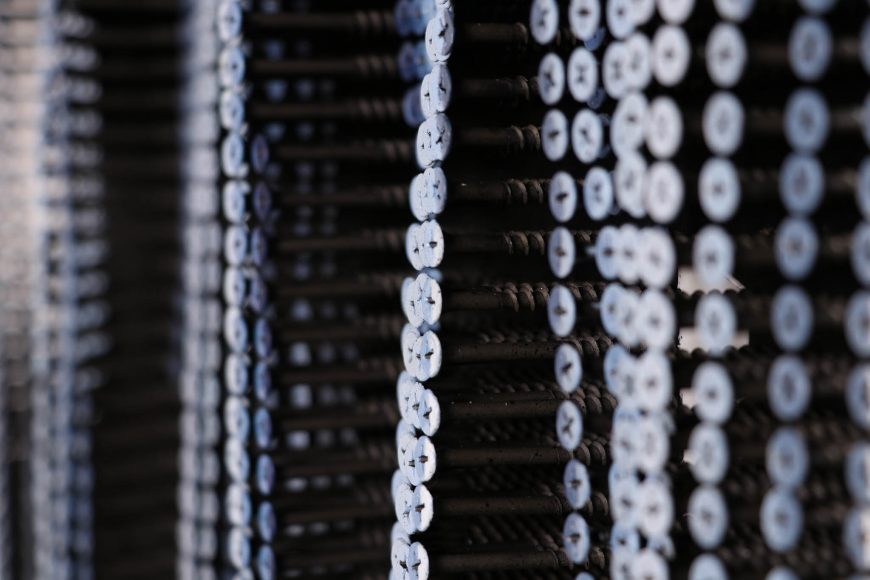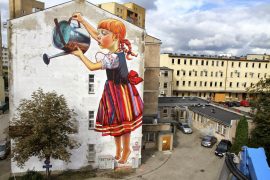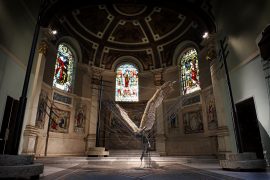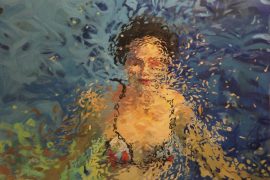Andrew Myers is an artist you hardly can find in the twenty-first century. In a time where nearly everything has been done and where artists’ only way of innovating oftentimes seems to be the use of modern technology or evermore shocking themes, Myers has created a style that never has been seen before. By using screws as his canvas he not only produces paintings but much more amazing 3D artworks. Though mostly known by it, Andrew Myers is more than the „screw-artist“ as he uses all kinds of mediums to express himself through art. Ηaving recently exhibited in the prestigious Art Basel in Miami, Andrew Myers talks to The Forest.
Interview by Andy Sturm
Describe yourself in three words.
Intense, critical, hopeful.
Though your art, especially your screw-art, is highly popular and very well known, it’s hard to find information about you. Could you tell us something about your upbringing?
Yes, I moved to Spain when I was six months old and lived there as a missionary kid until I was 16. I then moved to the US and ended up in California.
Do you see yourself as American or pretty much as a world-citizen?
Even though my parents are American I feel much more European and connected to the European culture. Spanish was my first language and all my schooling was done in a Spanish school, so I am very immersed in that culture.
How is your background in arts? When did you have your first contact with it?
I never took any art classes as a kid or through high school. It was not before I was 19 years old that I had my first real contact with it. I was looking for a career and I happened to take a tour of an art college called Laguna College of Art and Design and I realized that art would be my future.
So you immediately knew that this is what you wanted to do?
Absolutely yes! When I walked into the classroom and saw the students sculpting a nude model it was as if I instantly knew what my passion would be.
You then studied arts at Art Institute of Southern California. Did you enjoy it and what were your particular fields of interest?
When I attended, from 1999 until 2002, it was still called the Art Institute of California. It is now called LCAD. I enjoyed it very much. It was a very intense workload with at least eight hours a day of school and four hours of homework. I focused mostly on drawing and sculpturing – all from the human figure.
Has there ever been a time where you were attracted to classical painting?
I only took one painting class and received a pretty bad grade due to my lack of interest. It was only about six years later that I taught myself how to paint and became interested in color.
As you visited the Art Institute I would like to know your opinion on learnability of arts. How much talent is required as an artist and can one maybe become a real artist without much talent but with a good education?
I feel that a lot of aspects of art can be taught. I see art as a language. One must be able to learn the language to be able to communicate and be fluent in it. It is only then that you can break the rules of that language and create poetry. Of course, just like an instrument or any language, some people pick it up quicker than others and raw talent is always helpful in this process.
Then somewhere along the line, you decided to be a full-time artist. What always interests me about artists taking this step is how many risks they take. Did you have any security or maybe some support of galleries that made this decision easier?
No, I had zero support. I was still in school and was getting bored with the repetition of the curriculum. I decided to drop out and pursue art full time. I was single and 22 years old and figured that if there ever was a time to pursue it, it was then. It was extremely hard financially to stay afloat. I did as many shows as I could get into and always spoke of my work to anyone who would listen.
Would you say that your passion and determination basically gave you no choice to be something else than an artist?
I think I could have been a lot of different things in life until I fell in love with art. It slowly became all I could think of. I found myself leaving the studio but still sitting with a sketchbook at home, thinking of new ideas. It consumed me pretty quickly and now I would say that it is not a choice but more so who I am. A way of life, a way of thinking.
As an artist, you surely go through a lot of thinking and doubting. Was there a time when you had no hope that it is going to work anymore?
The only loss of hope was probably financial but I never gave up. There were times when I thought it couldn’t get any worse, then it did, and I would tell myself: “Ok, Andrew. You’ve hit rock bottom so there’s only up from here”. Then it would get even worse. Somehow though there was always light at the end of the tunnel and luckily it all changed.
When was the first time that you really could see that you can make it as an artist in the long term?
This was probably in 2004. I won a competition to create a public sculpture in my hometown of Laguna Beach. This opened the doors to meet people that would help my career and support me through sales. In fact, I still have a lot of the same clients that I had 13 years ago.
You spoke of clients who introduced you to commissioned work. How much money does somebody have to spend to get an Andrew Myers artwork and do you prefer personal or commissioned projects?
I definitely prefer doing my own work over commissions. There is a beauty in someone buying a piece that I have created for myself as it means that they truly believe in my vision and in what I am doing. I do accept a lot of commission work though but it’s a struggle most of the time. The prices of my artworks depend on different things like subject matter, size and complexity of the piece. They start around $6,000 and can go upwards to $60,000.
What is harder when you work on commissions: Being creative on demand or clients controlling what you want to do?
This will be somewhat of a funny answer but I have found that people have a different perception of what they look like. Reality vs Idealistic. In commissions, it is hard to capture the way someone wants to look versus what they actually look like.
Finally, let’s talk about your screw art. Everyone who has seen it probably describes it as unique and stunning. Can you tell us how this style developed?
When I was going to school I remember going through a Bernini book. I realized quickly that I would and could never be as good as him. I am extremely competitive but realized I did not have the time or finances to become as good and prolific as he was and many other sculptors had been. Once I figured this out I felt a sense of freedom and a new sense of purpose. Since I didn’t have to compete to create the “perfect” figure anymore I was able to focus on myself. I was able to focus on what made me different, and unique. I started experimenting with all kinds of materials, trying to recreate the human figure in mediums that no one was using. Some were successful and others were complete failures. One day at my studio, I started playing around with screws and realized that if they were close enough together they could be shaped and molded just like clay could. Six months later I finished my first piece. I am still experimenting with other materials and my goal is to keep creating unique art pieces in all kinds of new ways.
Lately, I saw some great works of you done with charcoal. Is the reason for your constant search for new ways maybe that you do not want to get labeled as the „screw-artist“ – just as some actors fear to be labeled as James Bond if they play him too long for example?
This is a great question and the answer is a big „YES“. I work in all kinds of mediums and consider myself a sculptor and a thinker first. I do not want to be labeled as the “screw artist”, rather I want to be an artist that has a grasp of many techniques and uses unusual materials to portray ideas.
I read you use up to 10.000 screws for one artwork. How long does it take for your artworks to get finished?
A screw piece can take anywhere from one to six months. I work on more than one piece at a time and have never really counted how many hours it takes per piece. This way I stay happy.
One thing that interests me is your workflow. How do you start? Do you use a computer to develop your motifs or do you start with a sketch by hand?
All my works come from an original sketch. There are no computers involved and everything is done by hand. Essentially, a screw piece is a drawing first, then a sculpture and finally a painting.
Your motifs are very diverse. You do portraits but also things like a simple shirt, a house that gets destroyed or high heels stuck in a bench vice. How do you get inspiration for your motifs?
Just like the different materials I use, I also am constantly thinking of substance – visuals that are important to me and visuals that can tell a story that people can relate to. I understand that besides being a quality painting or sculpture, art must have a voice and make people think. I am constantly thinking of new ideas and visuals to express where I am at that point in my life.
I have found two „self-portraits“ of you that I would like to talk about: The first one is a video that shows which inner-ingredients you use to produce art. The main ingredients in the video were creativity and hope mixed with a lot of insecurity and passion. This was over three years ago. Are your „ingredients“ still the same today? Would you maybe add something or change the weight of some of them?
Yes, I would say that the video is still pretty much true in its proportions and it is still relevant to who I am. Somedays I might add a little less insecurity, but then there are others where I might add more again. So the video actually can stay as it is for today.
The second thing I found is a sketch of yourself where you rated yourself with „D-“ as you were too critical, obviously shy and smoking and drinking too much. To which grade have you worked yourself up already?
That series is called „Life 101“. It is a series where the subjects have to give themselves a “life grade” according to where they feel they are at that particular moment. They then sit down with me and discuss why they feel that way and I make comments just like a teacher would on a test. For my portrait with the „D -“, it is the only instance where I wasn’t grading myself. The idea came from a letter, on the same type of paper, that my wife handed me asking for a divorce. Everything inside of me wanted to correct her spelling mistakes and send it back to her with a grade. I never did this as I didn’t want to be vindictive. Instead, I created a self-portrait with the way she viewed me and made comments around those feelings. If I were to grade myself today I would probably be in the B- section.
What would some of the next steps be to reach A+?
In all honesty, it would have to do with taking more care of myself physically. I’m very happy with my choices and decisions towards work and other people in general. With that said, I could be a little kinder to myself.
Having seen some pictures of you together with your son it seems you try to spend as much time as possible with him. Has the birth of your son changed you as a person and maybe even as an artist?
Absolutely. Crosby gives me the drive to be a better person. I went from working at night to having a set schedule. I became more productive, more consistent and an overall a more understanding and a more patient person. I can truly say that he taught me what real love looks like.
You will be part of Art Basel in Miami which is surely a dream come true. How did this come about and how do you feel about it?
I can’t exactly say who we are showing with or why yet because they want it to be a surprise. My feelings are mixed. It has always been hard for me to get excited about any art show but to be a part of one of the world’s greatest shows makes me really happy. I always believed I would get there and plan on continuing to make the right connections and put my work in front of the right people.
Can you already tell what you will be showing at Art Basel?
Not yet, unfortunately.
What does it mean for you to be an artist?
Freedom. Freedom to choose what I want to say and how I want to say it. Freedom to be myself and express my thoughts. Also, I feel that it comes with responsibility. Responsibility to create the best work I possibly can and to express thoughts and views not only to shock people – as some artists do – but to make them feel and think.
Do you have a favorite artwork of your own?
I’ve always said that my favorite art piece is the one I will make next.
Tough question: What is art for you?
Art to me is the translation of an individual’s thoughts into a visual representation of them. It is a language, a way of thinking and a way of seeing.
How deeply linked is art to skill in your eyes and can you relate to very abstract forms of art where most of the art is said to lay in the creative process and maybe not in the artwork itself?
I have mixed feelings on this subject. I try to see the beauty in all art but unfortunately, I cannot. I think skill is crucial to creating beauty but I also think subject matter is important. Also, there are plenty of creative processes that might not appear to be skillful but most definitely are.
How do you see the role of social media in arts nowadays? Your videos, for instance, are going through the roof. Is it maybe a chance for an artist who does not fit in the „offline“ art-world?
Social media has been an extremely important aspect of our success indeed. We have had videos with over 70 million views and the exposure of them alone has created opportunities that I didn’t think would happen at this time in my career. Because of it, we have been able to have an internet presence and make sales directly to customers all over the world.
So after years of hard work you established yourself as an artist who can live off his art. This per se is surely a dream come true. Do you have one main dream or an all-time goal that you would like to achieve as an artist?
Like you said, being an artist is a dream come true. I feel that the only real goal I have is to stay prolific and come up with new ways of expressing myself. Also, to be a part of major collections and show in museums is a goal. I wouldn’t mind going to the Guggenheim one day and seeing my work there.
Last question: If you could give young artists only one piece of advice, what would it be?
Believe in who you are and what you do. Don’t be shy about telling the world you’re an artist. Take every opportunity to show people your work and be proud of it, not egotistical, but proud. Also, always believe that you will persevere through adversity.

